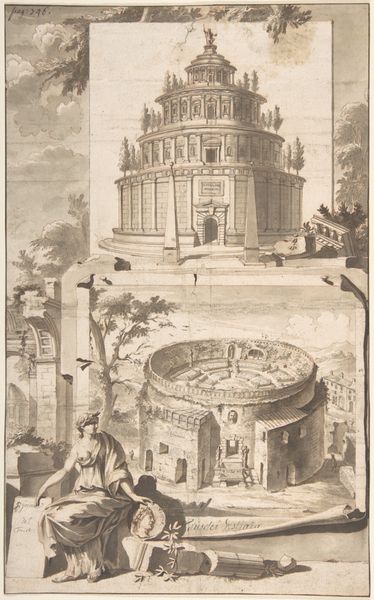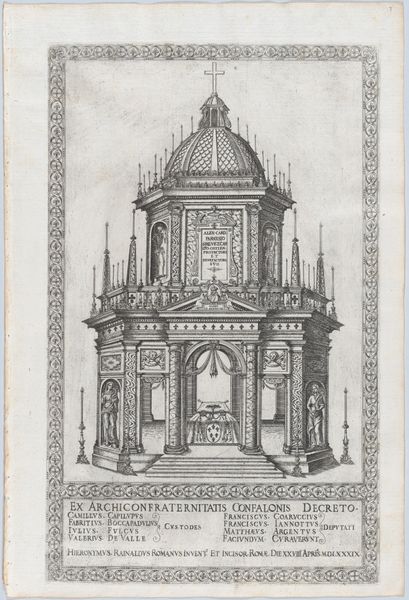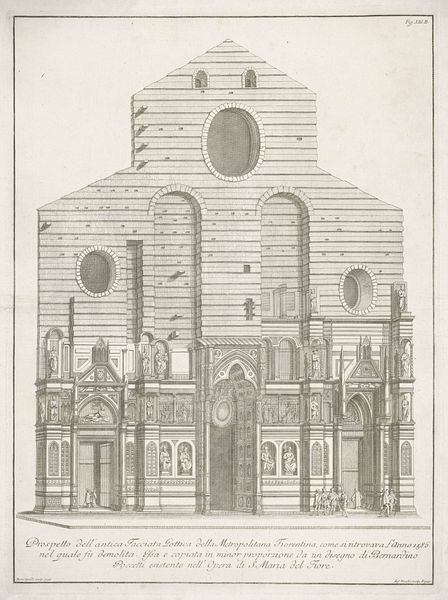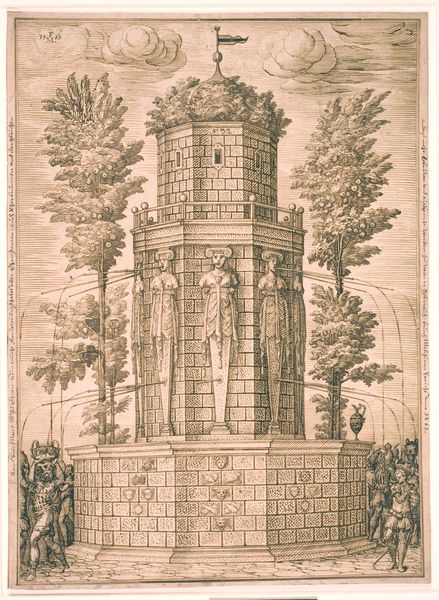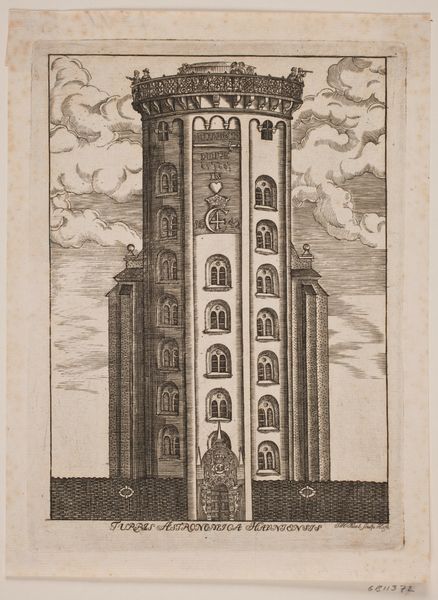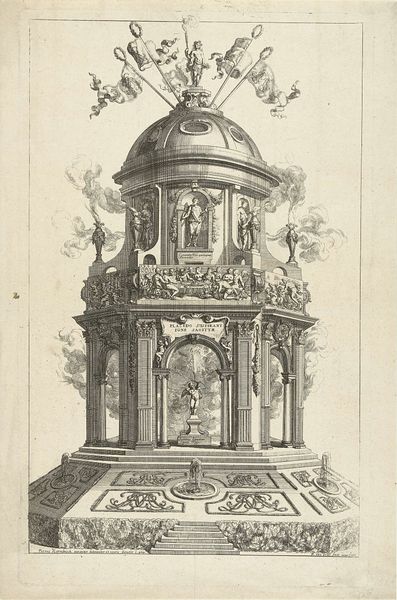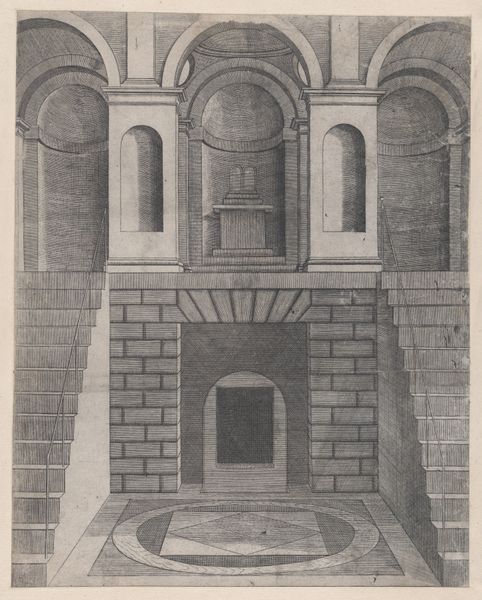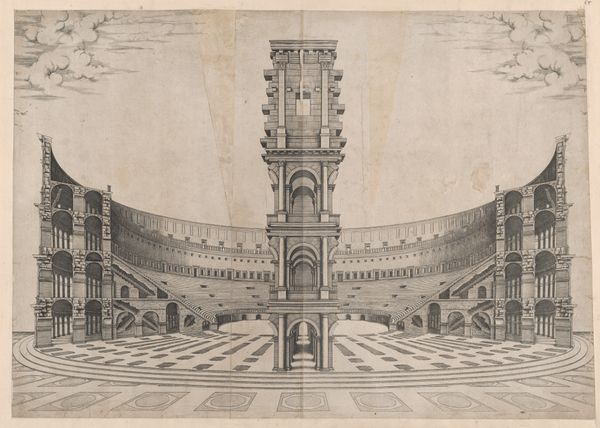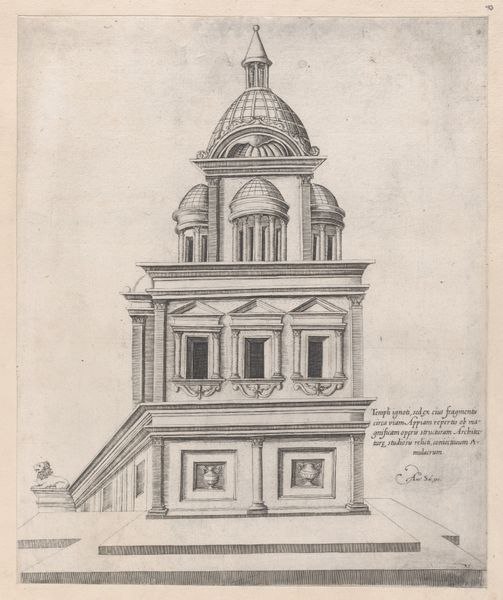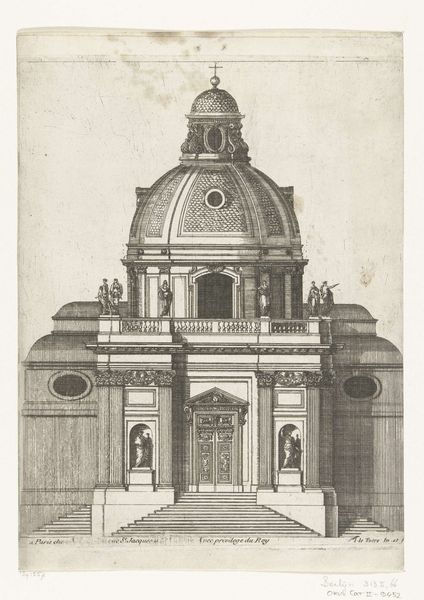
Speculum Romanae Magnificentiae: Sepulchre of Augustus 1575
0:00
0:00
drawing, print, engraving, architecture
#
drawing
# print
#
11_renaissance
#
cityscape
#
history-painting
#
engraving
#
architecture
Dimensions: sheet: 13 7/8 x 18 5/16 in. (35.3 x 46.5 cm) mount: 16 3/4 x 22 1/8 in. (42.6 x 56.2 cm)
Copyright: Public Domain
Editor: This engraving from 1575, by Étienne Dupérac, depicts the Sepulchre of Augustus. It’s incredibly detailed. It almost feels like a stage set. What historical context is informing this image? Curator: Indeed. What Dupérac offers isn’t just a depiction but an interpretation, shaped by the culture of his time. This print is from a series called the Speculum Romanae Magnificentiae, aiming to reconstruct the grandeur of ancient Rome. But it’s more than just accurate record keeping. Consider that, during the Renaissance, the ruins of Rome became powerful symbols. For artists like Dupérac, the Sepulchre, even in its ruined state, embodied the lost glory of the Roman Empire, something to be revived through art and architecture. Notice how Dupérac frames it, almost reverentially? How does that affect your understanding? Editor: I see what you mean. It's less about the actual ruins and more about what those ruins represent culturally, and how the artist frames this perspective. Curator: Exactly. The “accurate delineation,” as the inscription states, serves a larger purpose. It connects 16th-century viewers with a specific vision of their historical predecessors. Think of how this image may have served as a kind of political commentary. Dupérac may have used imagery from the past to give weight to contemporary issues. Editor: So, by idealizing this ruin, Dupérac may have promoted a specific socio-political ideology of his time? Curator: Precisely. Editor: That makes me reconsider the relationship between art, history, and cultural power. Curator: That’s the power of historical analysis; we understand not just what we are seeing, but why.
Comments
No comments
Be the first to comment and join the conversation on the ultimate creative platform.
